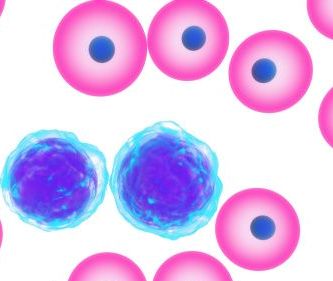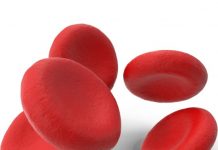Thalassemia is a group of blood disorders that are genetically inherited by the patient. The hemoglobin is that part of the red blood cell which carries oxygen to the different tissues of the body. For a patient who is suffering from any of the forms of this blood disorder the hemoglobin has an abnormal molecule due to the mutation caused by a recessive gene.

Hemoglobin consists of two proteins which are called alpha and beta. If there is an imbalance between the two proteins in the red blood cells it impairs their ability to carry oxygen. If there is not enough alpha protein in the hemoglobin it is called alpha thalassemia and if there is a deficiency of beta protein then it is called beta thalassemia.
The two deficiencies show a remarked preference to people from specific regions and so it is common to find alpha thalassemia from people who belong to the Middle East, India, Africa, Southern China, Southeast Asia, and sometimes the Mediterranean.
On the other hand beta thalassemia is more common in people hailing from Greece, Italy, Africa, Iran, Southern China, and Southeast Asia.
Of course there is no hard and fast rule about this and people from any region can be afflicted by any of the forms of thalassemia in theory.
What are different forms of thalassemia
Thalassemia’s primary defining symptom is the lack of proteins alpha or beta. In case of alpha thalassemia a small lack of the protein can be a silent carrier state. There are no health problems visible. If the lack of alpha proteins becomes worse it can be similar to symptoms associated with iron deficiency anemia. In case there is enough of a deficiency of alpha protein to cause significant health problems such as bone deformities, enlarges spleen and fatigue it is called Hemoglobin H disease.
In case of beta thalassemia the lack of beta protein with no health problems is termed thalassemia minor or thalassemia trait. If there is enough of a beta protein deficiency to cause severe anemia and health problems it is called thalassemia intermedia. The worst and most severe is where no beta protein is created by the body and is called thalassemia major or Cooley’s anemia.
Other forms of thalassemia include E beta thalassemia and sickle beta thalassemia. In the former, abnormal E hemoglobin joins the beta proteins to produce symptoms similar to beta thalassemia intermedis. In the latter the abnormal S hemoglobin combines with the beta thalassemia to produce severe form of a disorder which mimics sickle cell disease.
What is thalassemia’s treatment procedure
What is thalassemia’s most common treatment? The answer would be blood transfusions. This helps provide the patients with healthy red blood cells that can carry oxygen to the body tissues. Other treatments that are also helpful include chelation therapy , splenctomy, and bone marrow transplant. There is constant research ongoing in the field and doctors are looking at gene therapy and in utero blood transfusions to aid and cure thalassemia.














